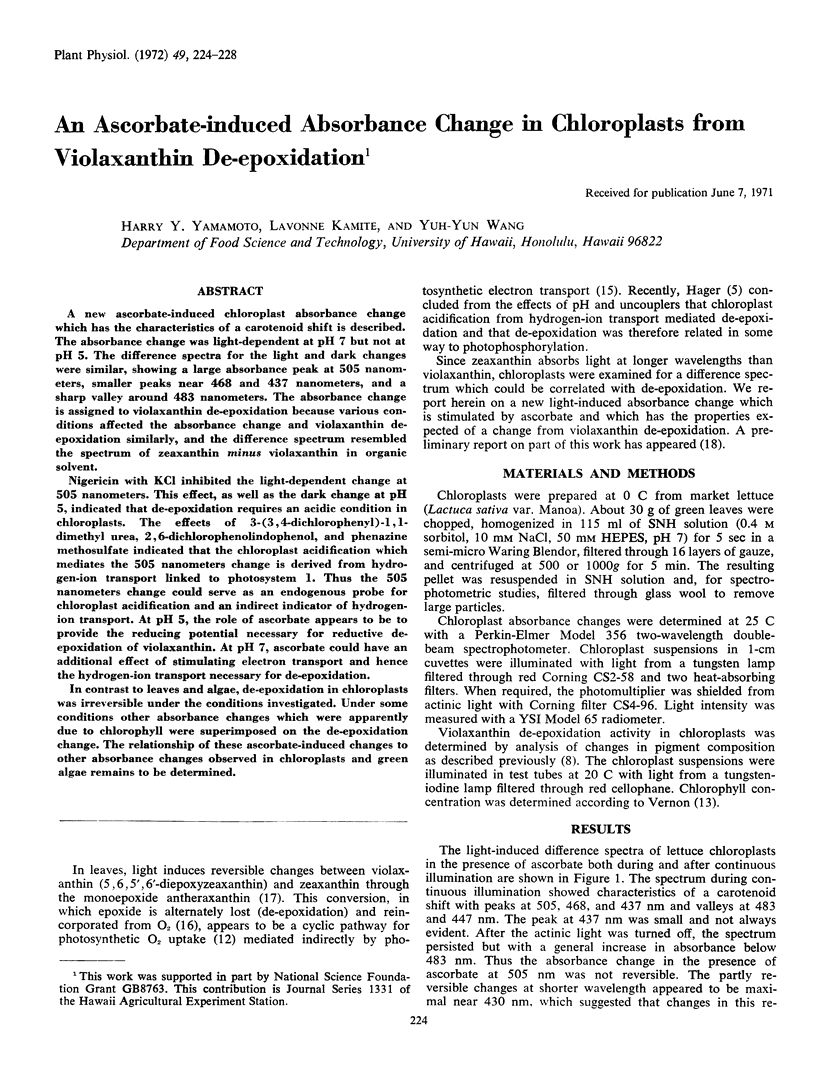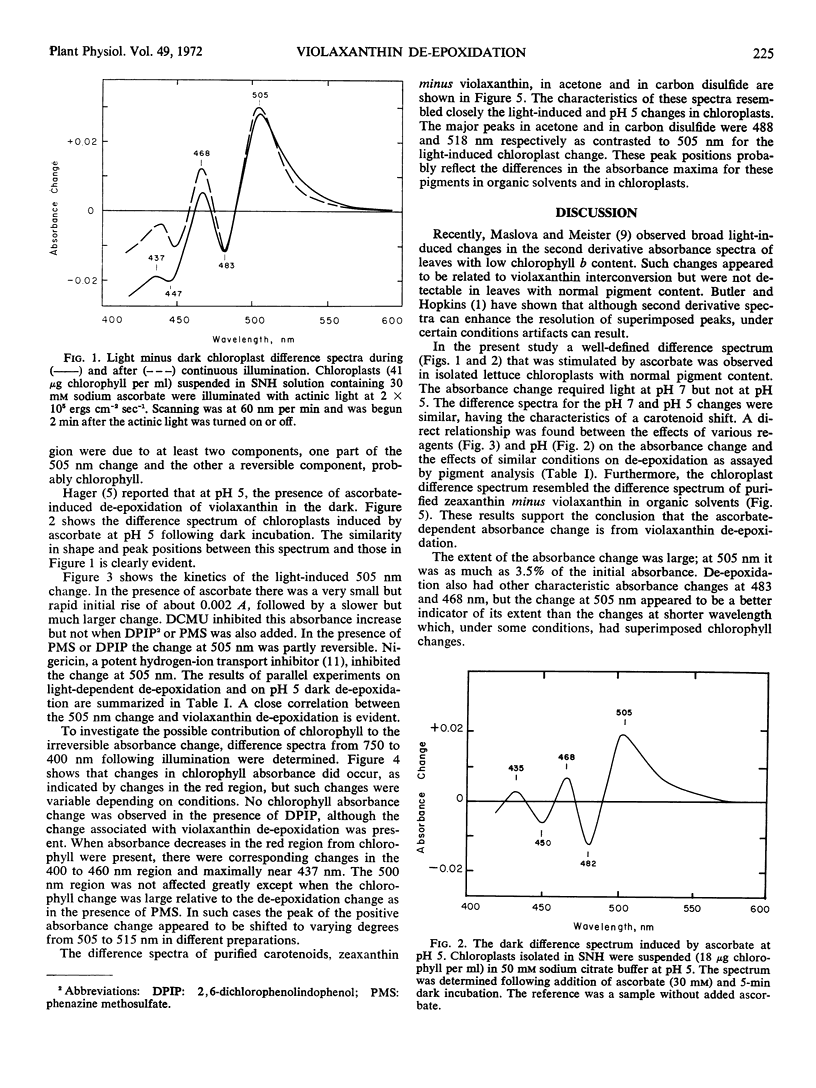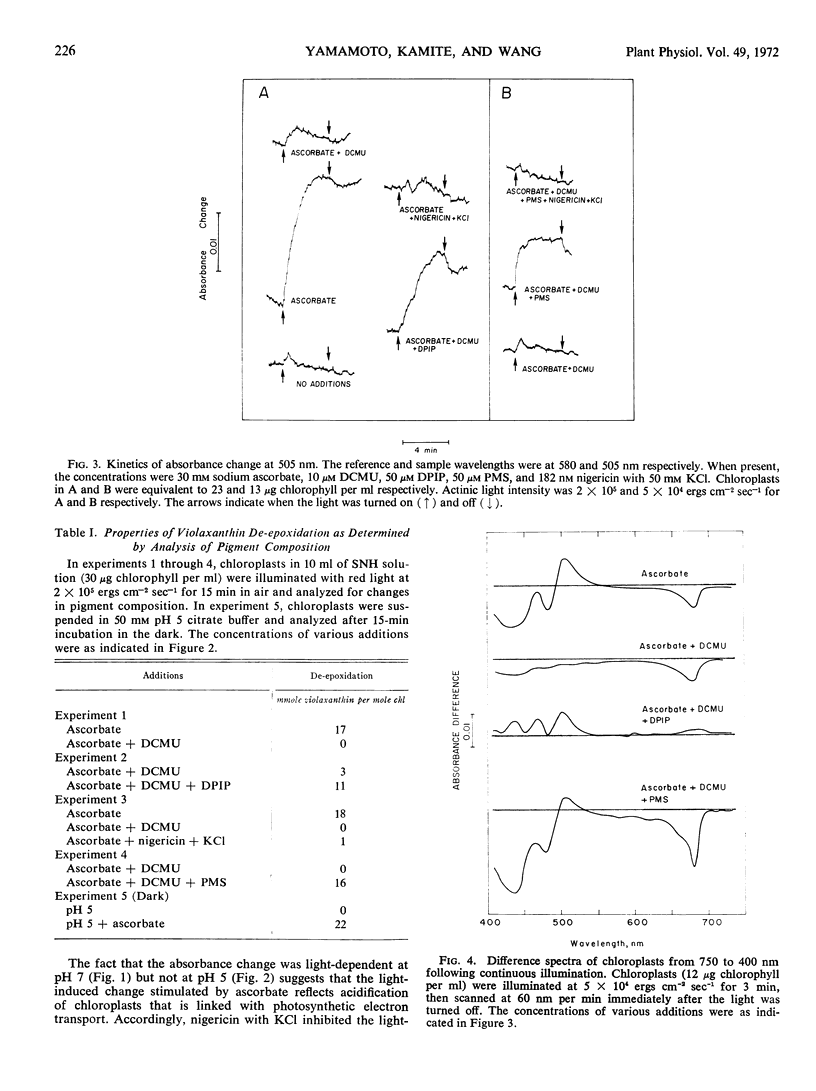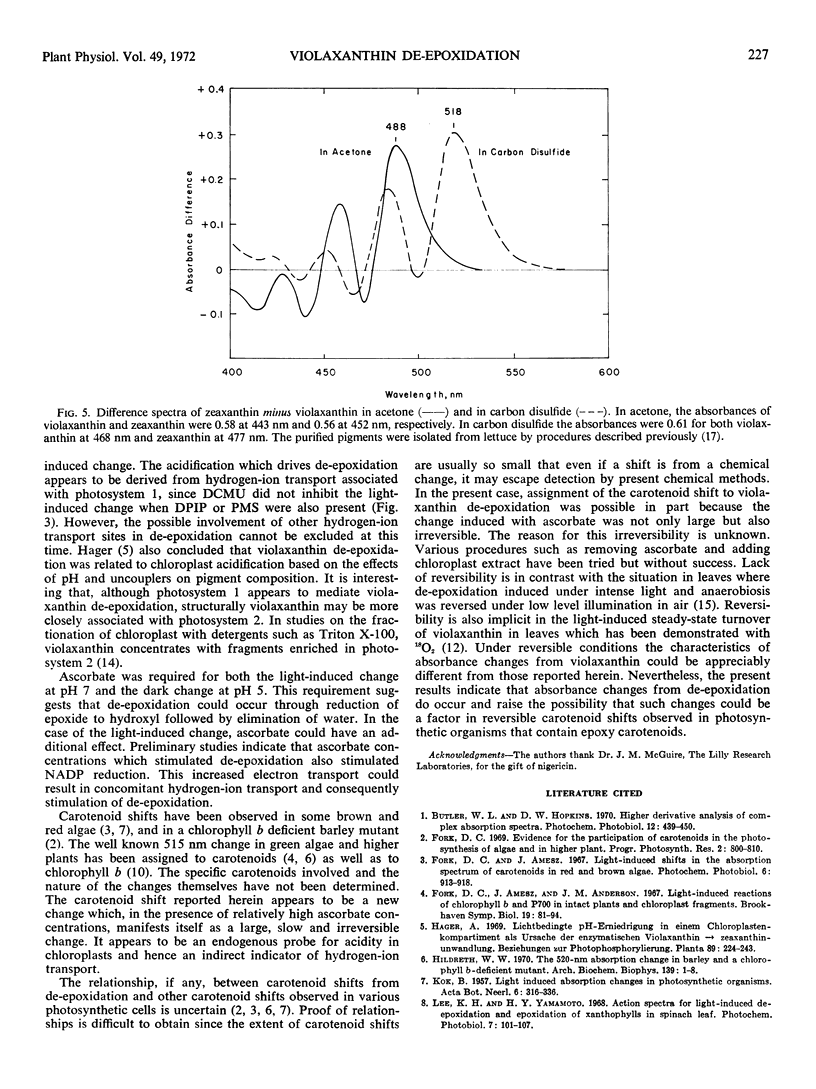Abstract
A new ascorbate-induced chloroplast absorbance change which has the characteristics of a carotenoid shift is described. The absorbance change was light-dependent at pH 7 but not at pH 5. The difference spectra for the light and dark changes were similar, showing a large absorbance peak at 505 nanometers, smaller peaks near 468 and 437 nanometers, and a sharp valley around 483 nanometers. The absorbance change is assigned to violaxanthin de-epoxidation because various conditions affected the absorbance change and violaxanthin de-epoxidation similarly, and the difference spectrum resembled the spectrum of zeaxanthin minus violaxanthin in organic solvent.
Nigericin with KCl inhibited the light-dependent change at 505 nanometers. This effect, as well as the dark change at pH 5, indicated that de-epoxidation requires an acidic condition in chloroplasts. The effects of 3-(3,4-dichlorophenyl)-1, 1-dimethyl urea, 2,6-dichlorophenolindophenol, and phenazine methosulfate indicated that the chloroplast acidification which mediates the 505 nanometers change is derived from hydrogen-ion transport linked to photosystem 1. Thus the 505 nanometers change could serve as an endogenous probe for chloroplast acidification and an indirect indicator of hydrogenion transport. At pH 5, the role of ascorbate appears to be to provide the reducing potential necessary for reductive de-epoxidation of violaxanthin. At pH 7, ascorbate could have an additional effect of stimulating electron transport and hence the hydrogen-ion transport necessary for de-epoxidation.
In contrast to leaves and algae, de-epoxidation in chloroplasts was irreversible under the conditions investigated. Under some conditions other absorbance changes which were apparently due to chlorophyll were superimposed on the de-epoxidation change. The relationship of these ascorbate-induced changes to other absorbance changes observed in chloroplasts and green algae remains to be determined.
Full text
PDF




Selected References
These references are in PubMed. This may not be the complete list of references from this article.
- Fork D. C., Amesz J., Anderson J. M. Light-induced reactions of chlorophyll b and P 700 in intact plants and chloroplast fragments. Brookhaven Symp Biol. 1966;19:81–94. [PubMed] [Google Scholar]
- Hildreth W. W. The 520-nm absorption change in barley and a chlorophyll b-deficient mutant. Arch Biochem Biophys. 1970 Jul;139(1):1–8. doi: 10.1016/0003-9861(70)90038-x. [DOI] [PubMed] [Google Scholar]
- Shavit N., Dilley R. A., San Pietro A. Ion translocation in isolated chloroplasts. Uncoupling of photophosphorylation and translocation of K+ and H+ ions induced by Nigericin. Biochemistry. 1968 Jun;7(6):2356–2363. doi: 10.1021/bi00846a043. [DOI] [PubMed] [Google Scholar]
- Takeguchi C. A., Yamamoto H. Y. Light-induced 18O2 uptake by epoxy xanthophylls in New Zealand spinach leaves (Trtragonia expansa). Biochim Biophys Acta. 1968 Feb 12;153(2):459–465. doi: 10.1016/0005-2728(68)90087-x. [DOI] [PubMed] [Google Scholar]
- YAMAMOTO H. Y., NAKAYAMA T. O., CHICHESTER C. O. Studies on the light and dark interconversions of leaf xanthophylls. Arch Biochem Biophys. 1962 Apr;97:168–173. doi: 10.1016/0003-9861(62)90060-7. [DOI] [PubMed] [Google Scholar]
- Yamamoto H. Y., Chang J. L., Aihara M. S. Light-induced interconversion of violaxanthin and zeaxanthin in New Zealand spinach-leaf segments. Biochim Biophys Acta. 1967 Jul 25;141(2):342–347. doi: 10.1016/0304-4165(67)90108-0. [DOI] [PubMed] [Google Scholar]
- Yamamoto H. Y., Chichester C. O. Dark incorporation of 18-O2 into antheraxanthin by bean leaf. Biochim Biophys Acta. 1965 Sep 27;109(1):303–305. doi: 10.1016/0926-6585(65)90115-9. [DOI] [PubMed] [Google Scholar]
- Yamamoto H. Y., Wang Y., Kamite L. A chloroplast absorbance change from violaxanthin de-epoxidation. A possible component of 515 nm changes. Biochem Biophys Res Commun. 1971 Jan 8;42(1):37–42. doi: 10.1016/0006-291x(71)90358-5. [DOI] [PubMed] [Google Scholar]


